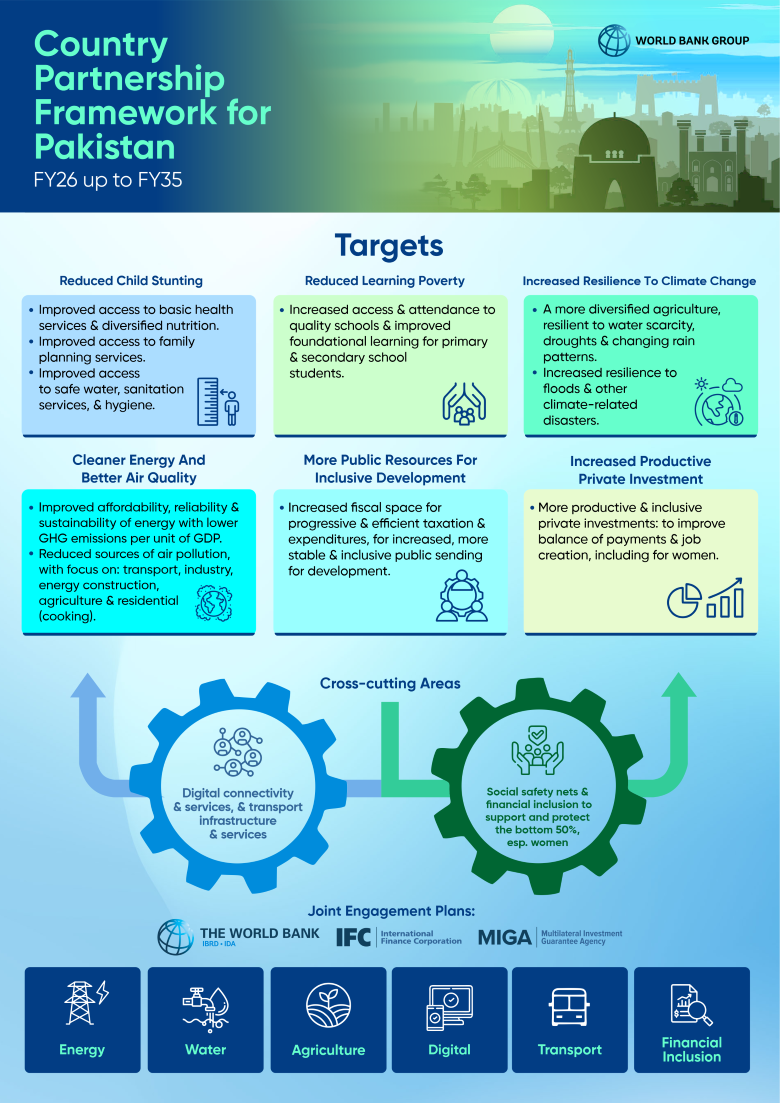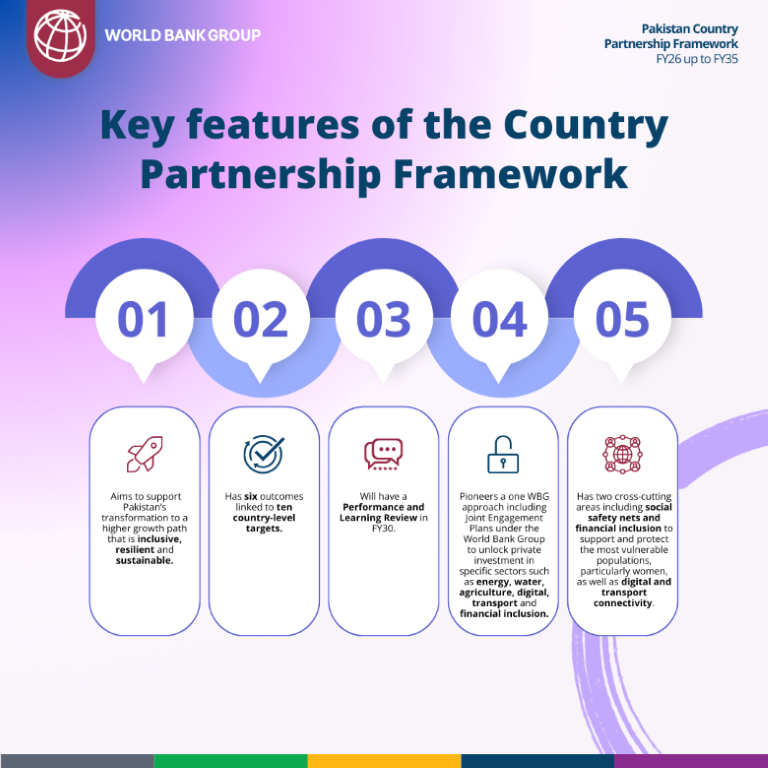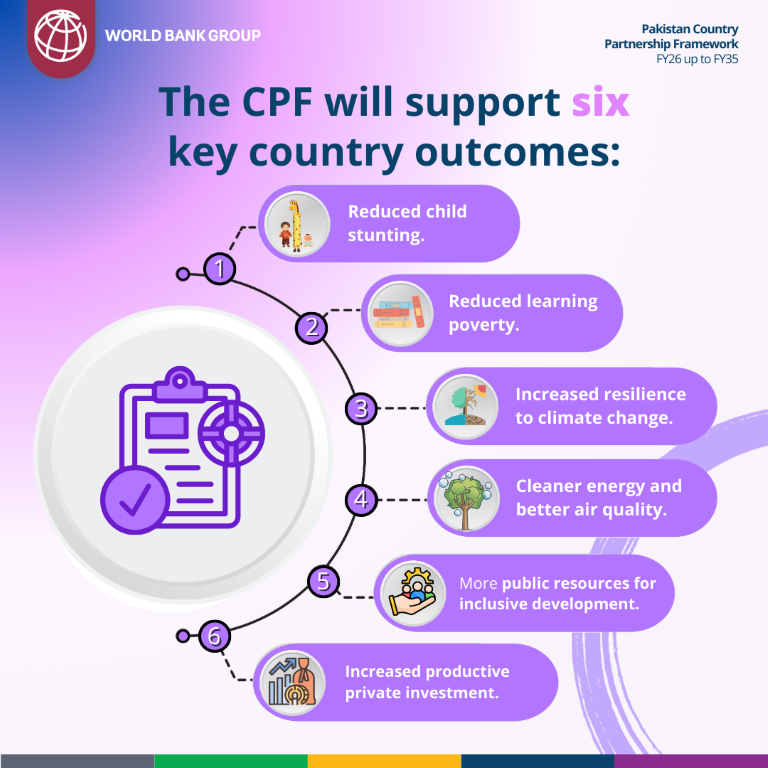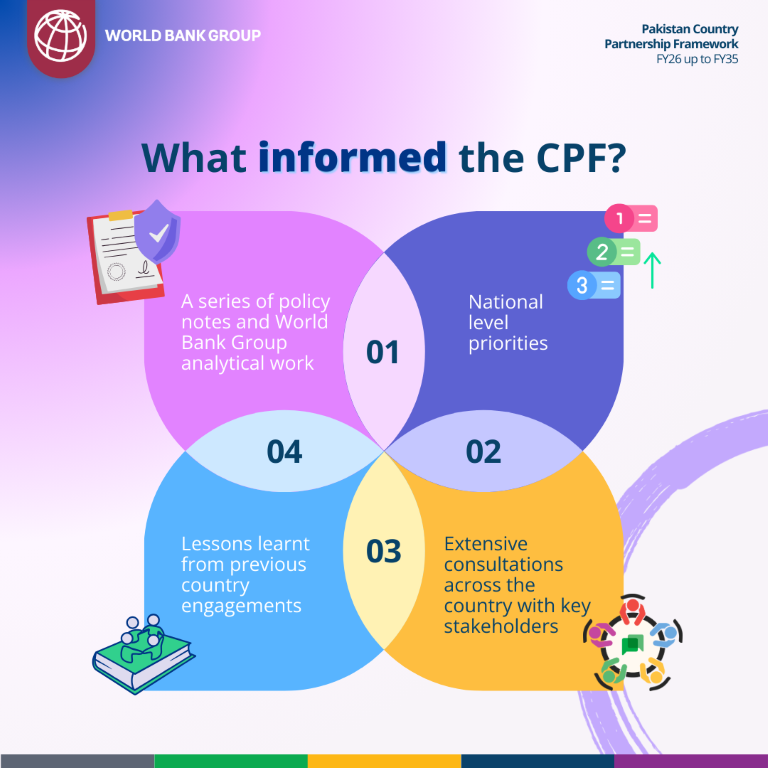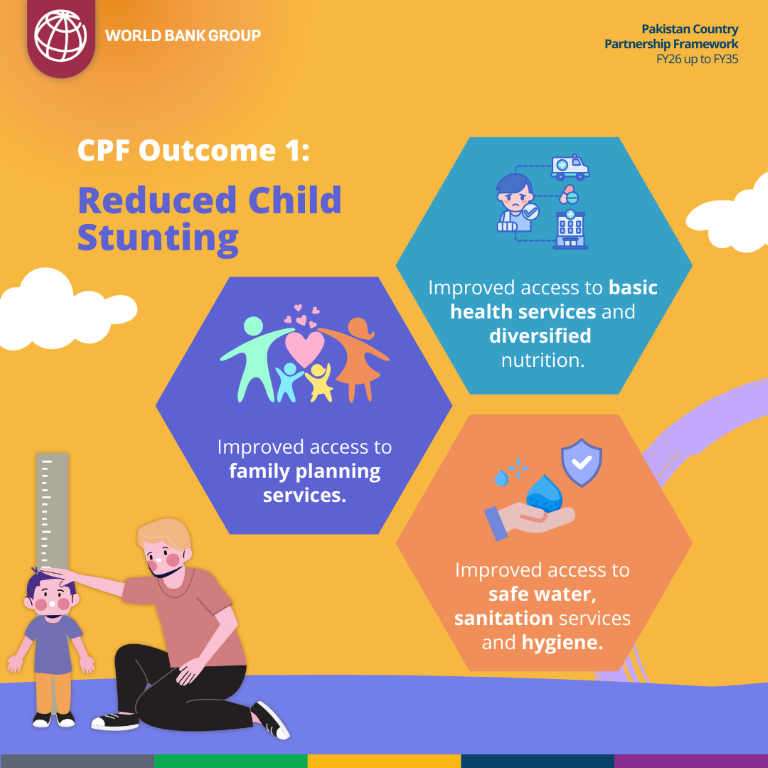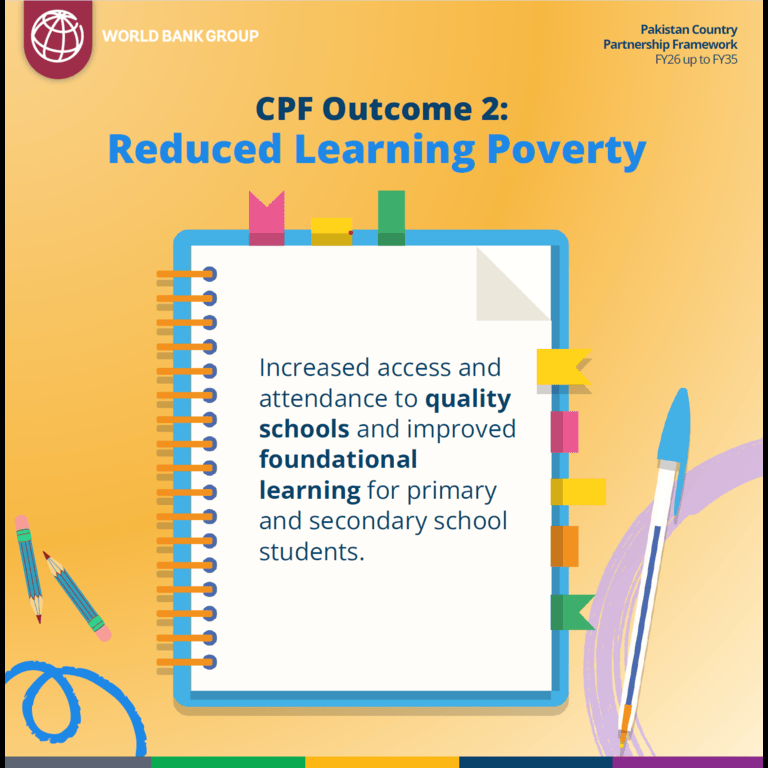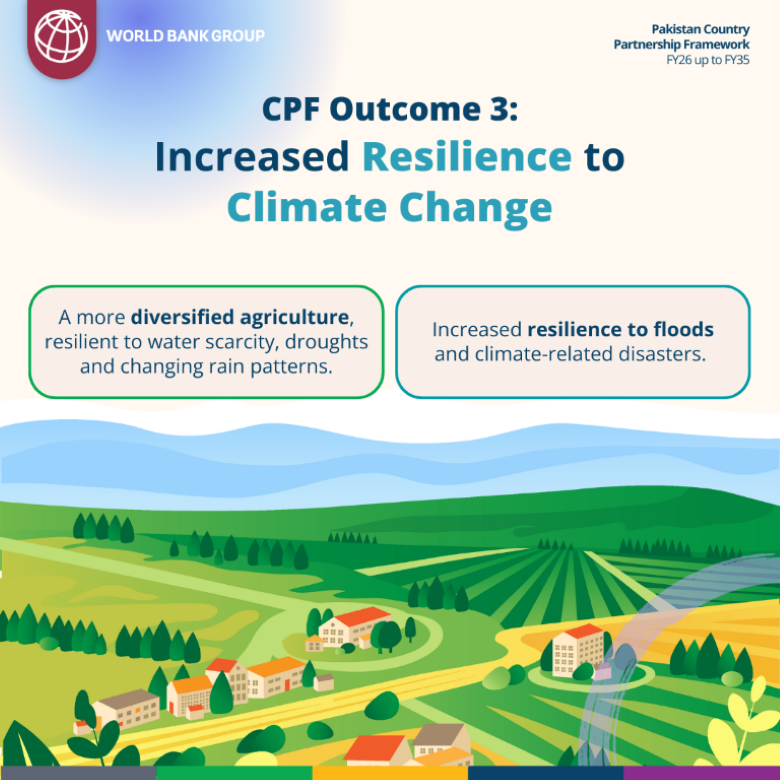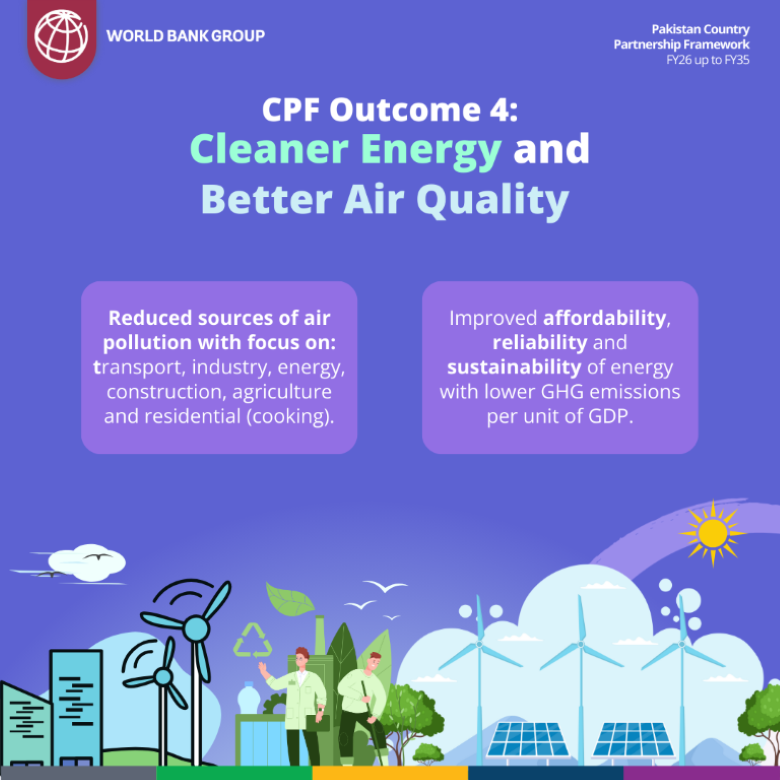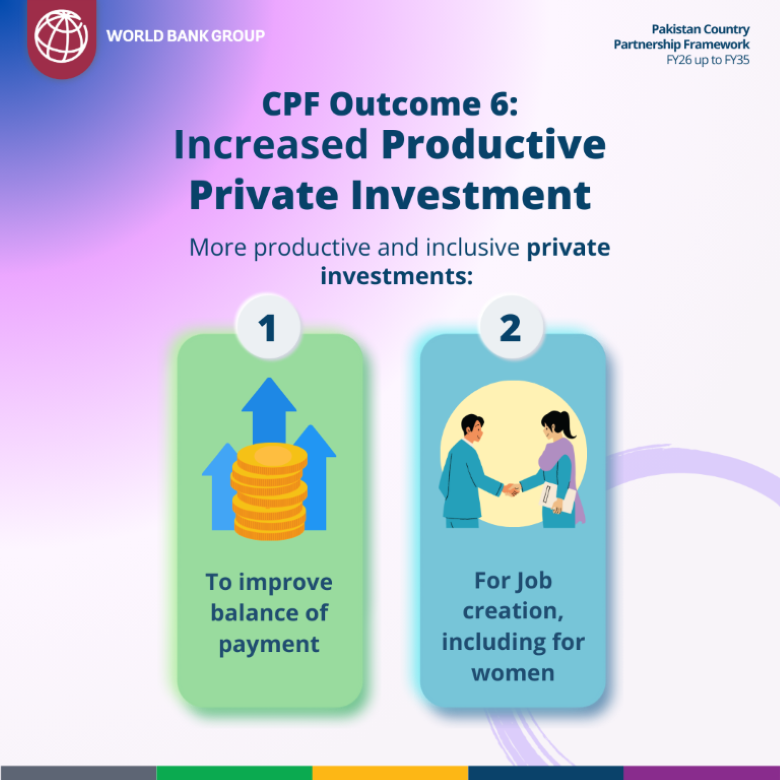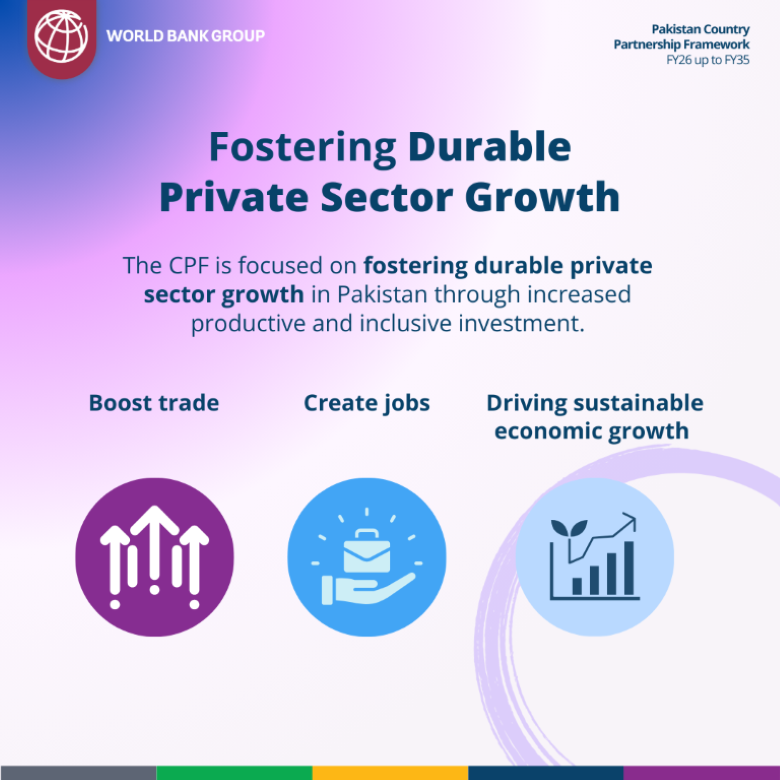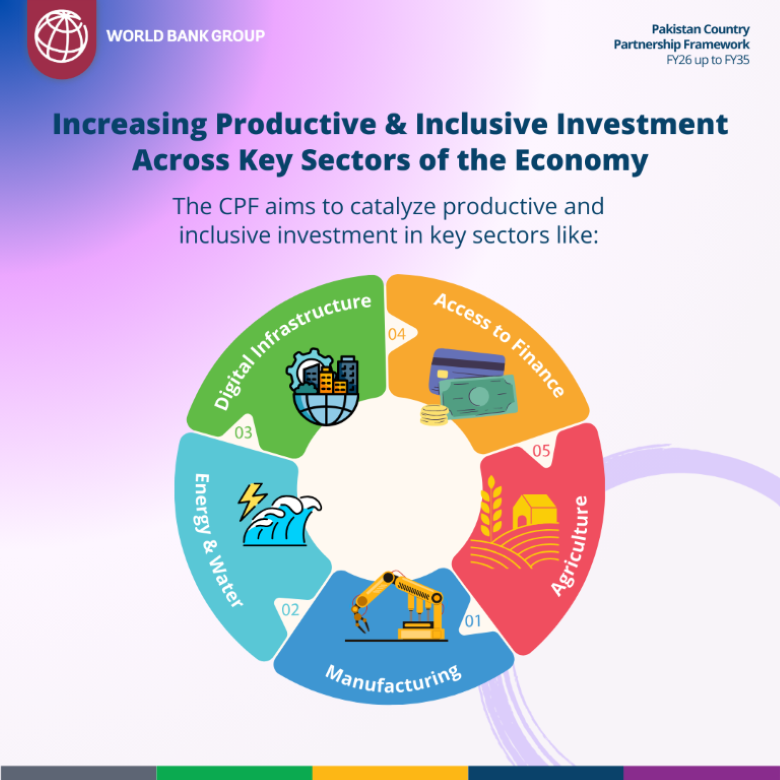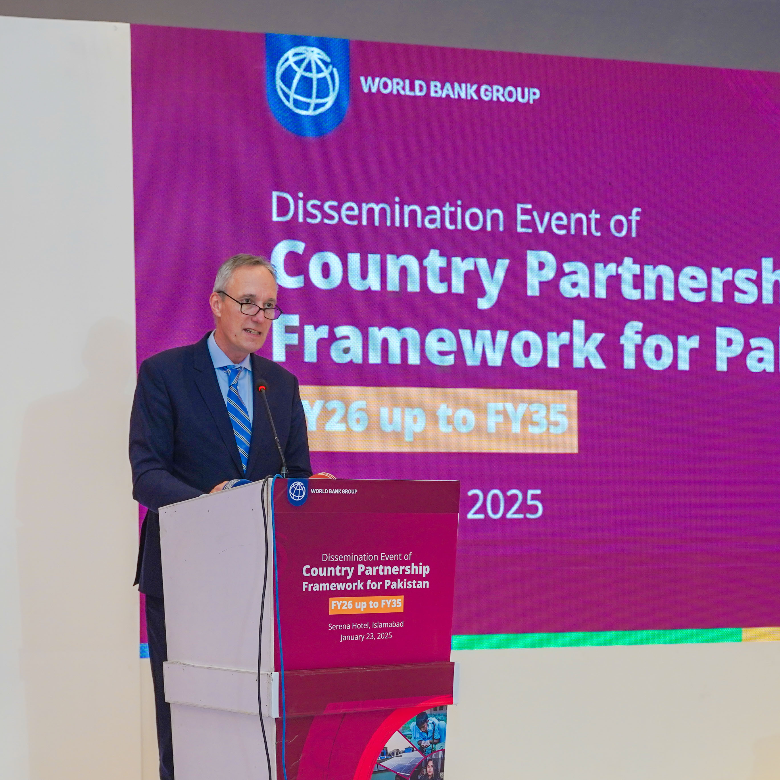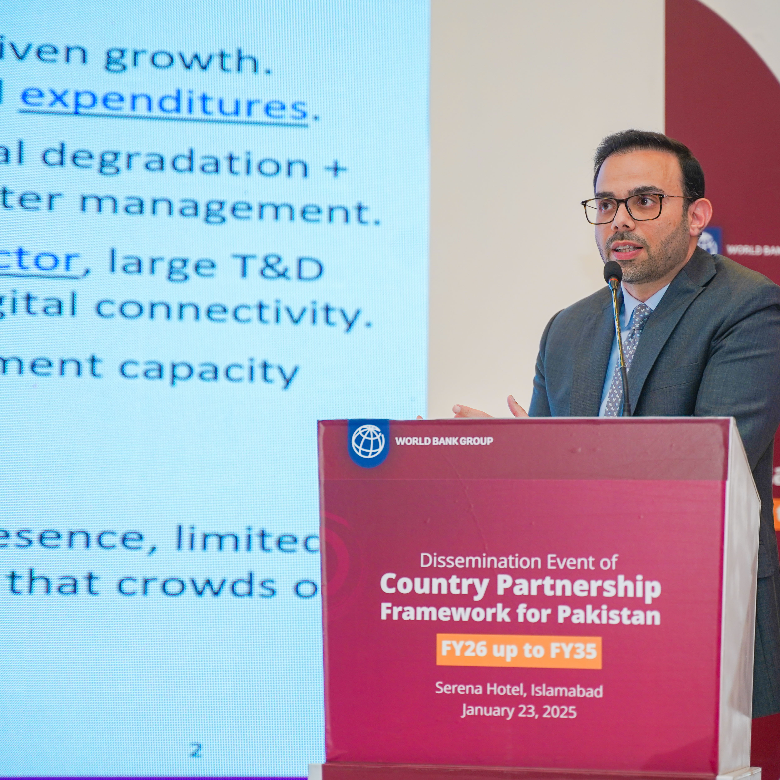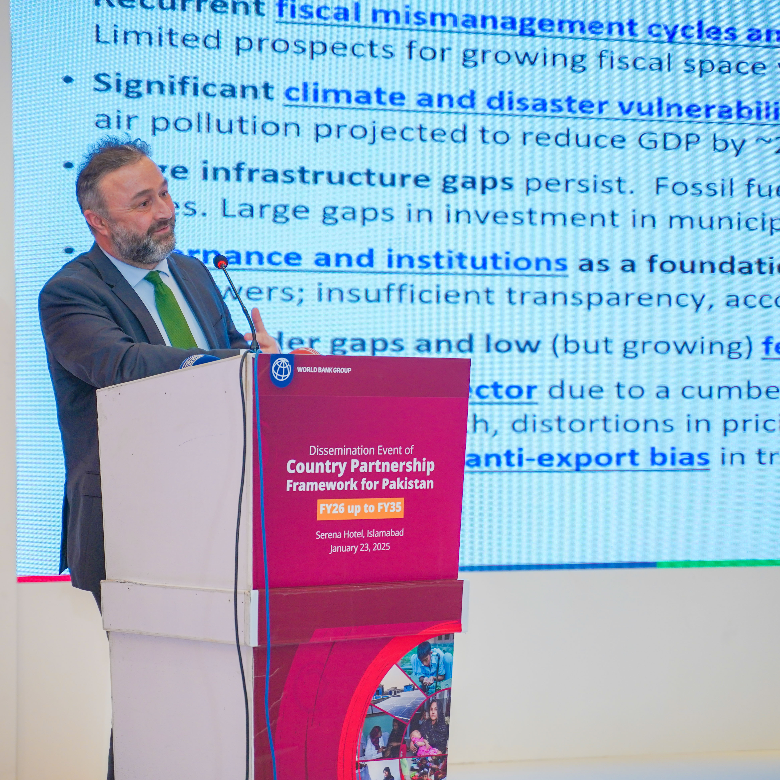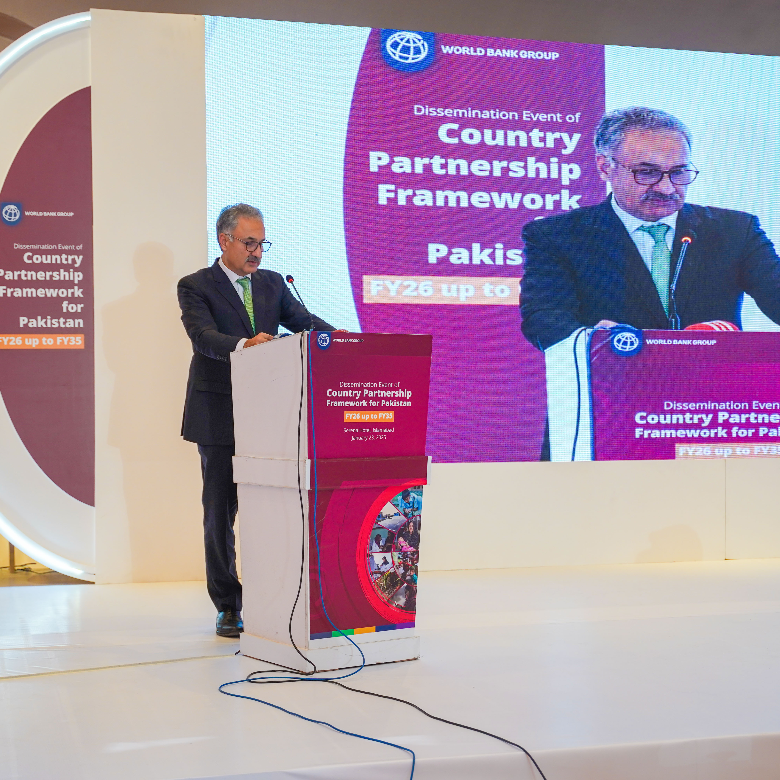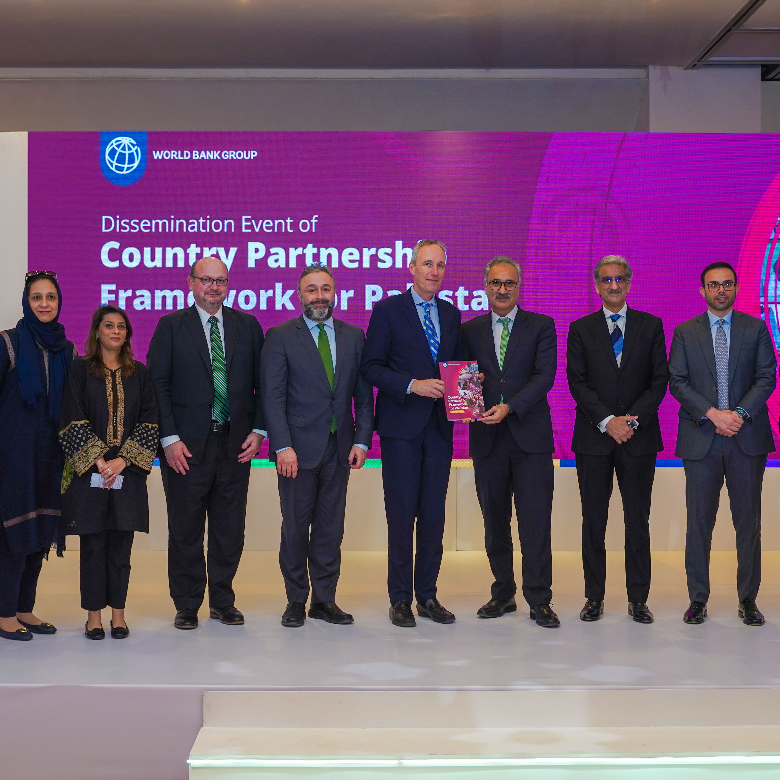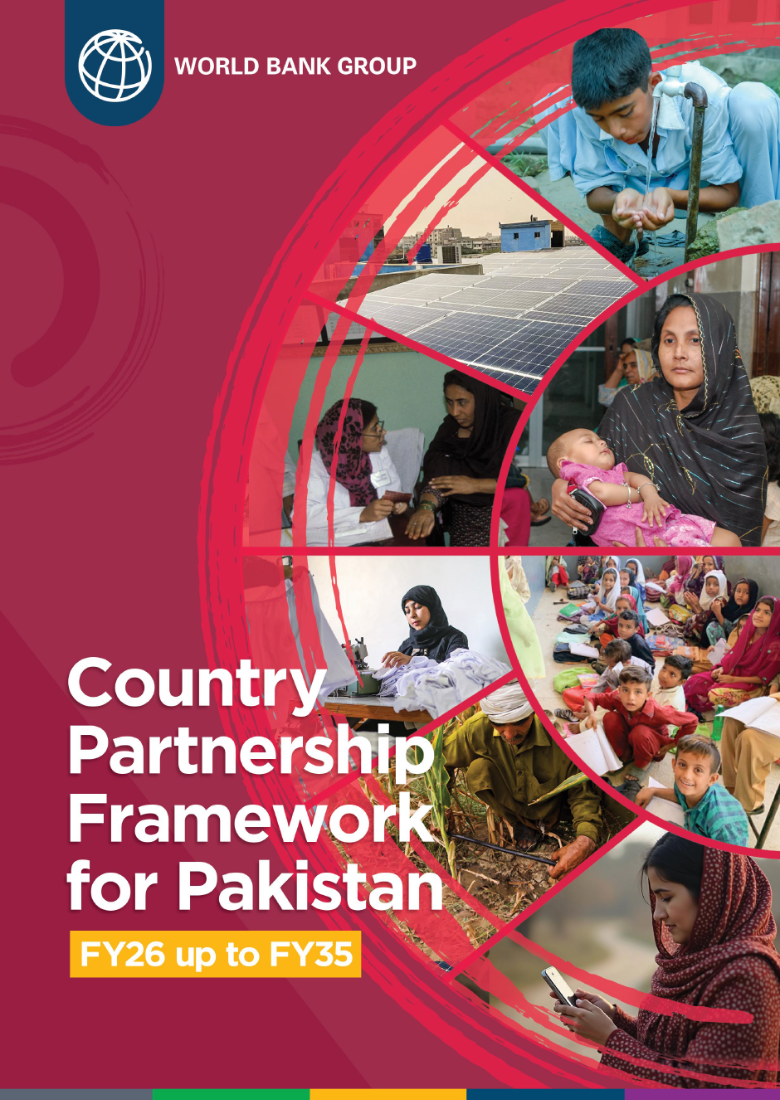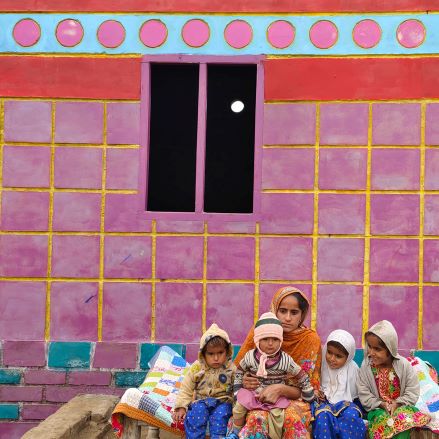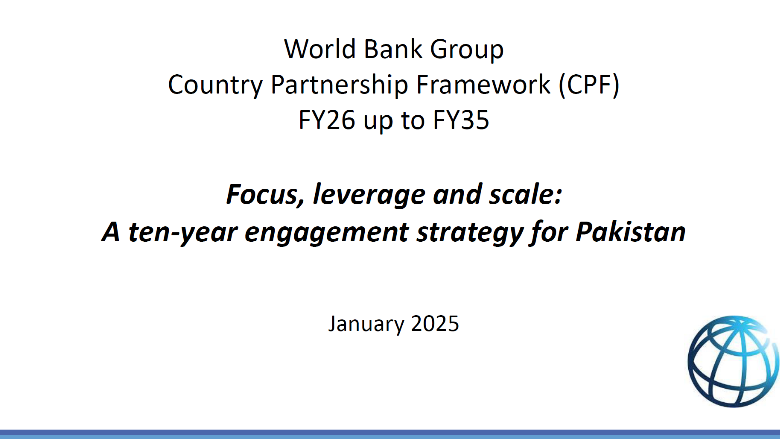After decades of volatile low growth and low investment, Pakistan has fallen behind its peers in key metrics of development. It now has an opportunity to durably take another course. The economy is recovering from the recent crisis as the government has launched an ambitious program of fiscal, energy, and business environment reforms that have the potential to sustain a growth acceleration - but past failures have led to a credibility gap that may mute the economic response. These reforms can lead to a durable recovery made of stronger investment, productivity, and growth if they are duly implemented and sustained. The Country Partnership Framework (CPF) will run up to 10 years - with a Performance and Learning Review (PLR) in FY30 - and is anchored around six outcomes focused on Pakistan’s most critical development needs. This approach is a shift from the past, as it aims to focus less on short-term adjustment programs and on often small investments in scattered sectors, to more selective, stable, and larger investments in areas critical for sustained development and that require time and persistence for impact. This should also help shield the program from a volatile polity and a track record of frequent changes in priorities and short-lived initiatives while facilitating alignment with other development partners.
Pakistan Country Partnership Framework FY 2026 up to FY 2035
Najy Benhassine's (World Bank Country Director for Pakistan) message on the Pakistan CPF
Zeeshan Sheikh's (IFC Country Manager for Pakistan and Afghanistan) message on the Pakistan CPF
The CPF supports six key country outcomes:
- Reduced child stunting through increased access to clean water and sanitation services, basic health and nutrition and family planning services
- Reduced learning poverty through quality foundational education
- Increased resilience to floods and other climate-related disasters and better food and nutrition security in the face of climate impacts on the water-agriculture nexus
- Cleaner and more sustainable energy and better air quality
- Increased fiscal space and better management and more progressive public expenditures for development
- Increased productive and inclusive private investment, particularly to improve external trade balances and higher, more sustainable growth.
A series of policy notes and other analytical work helped inform the CPF priorities, together with extensive consultations across the country with key stakeholders including the government, private sector, civil society, think tanks, academia, media, and development partners. The CPF has also been informed by the Government’s priorities, both at the Federal and Provincial levels, as well as lessons learned from the previous country engagements. It is also well aligned with key objectives of the recently launched National Economic Transformation Plan, Uraan Pakistan, and those of the Prime Minister’s Economic Transformation Agenda and Implementation Plan.
For more information on the CPF country wide consultations, please visit the CPF Consultations Webpage.
Infographics
Photo Gallery - CPF Dissemination Event in Islamabad | January 23, 2025
Useful Resources

Scan the QR code to read the Pakistan Country Partnership Framework
Experts

Country Director for Pakistan, South Asia Region

Country Manager for Pakistan and Afghanistan, International Finance Corporation
